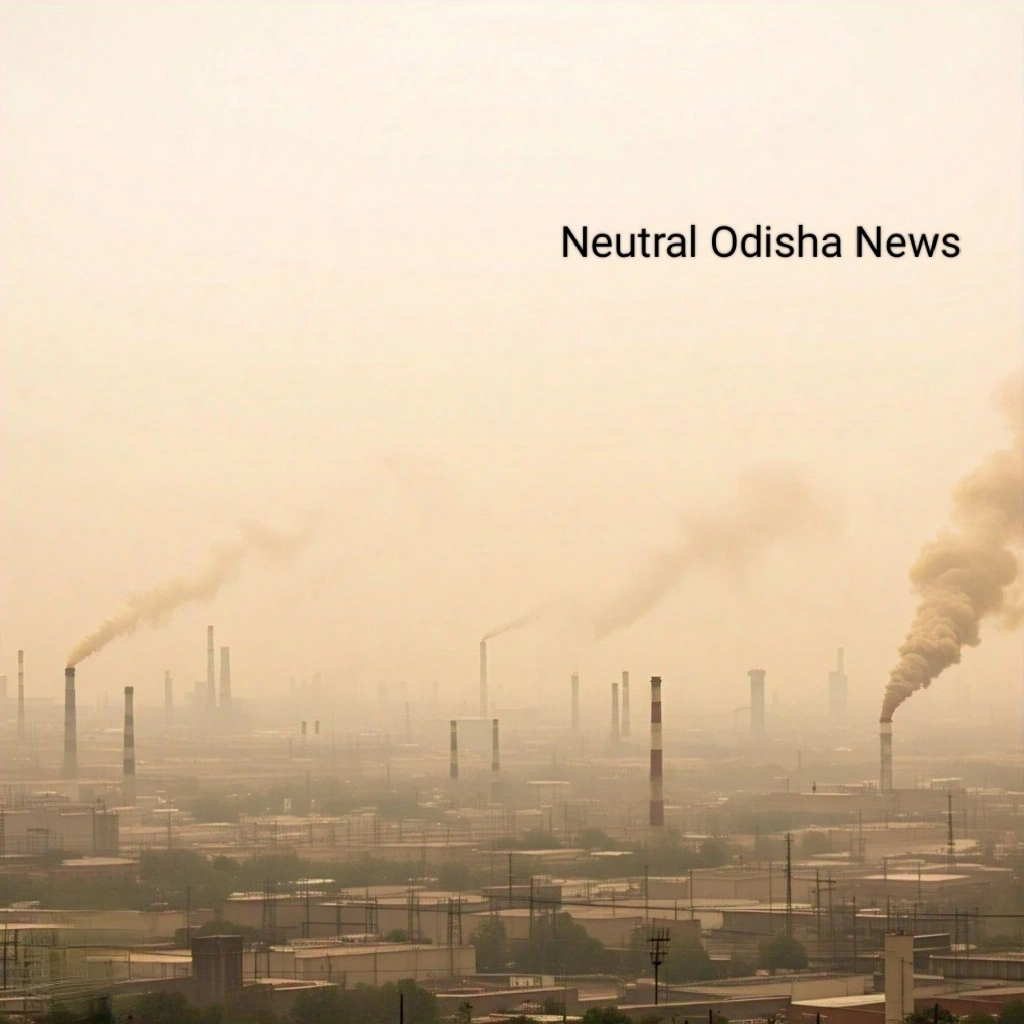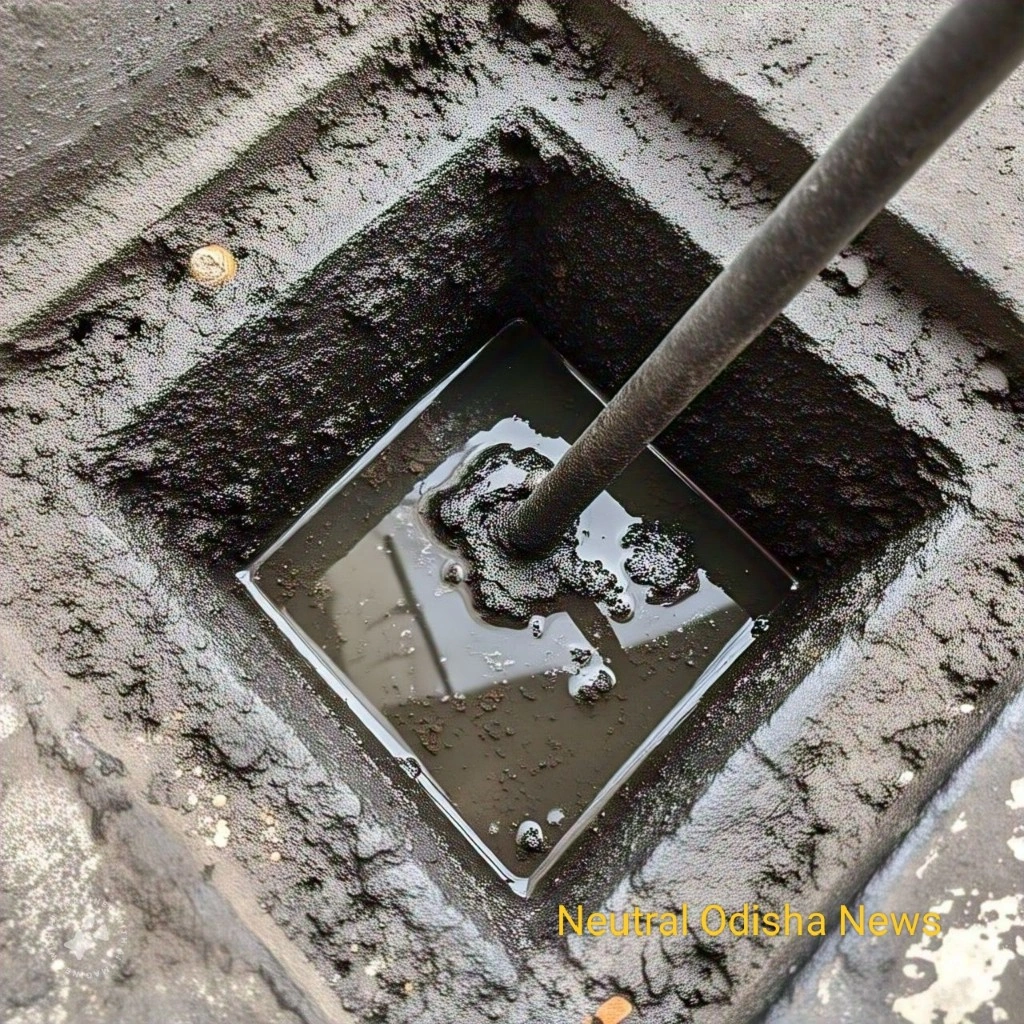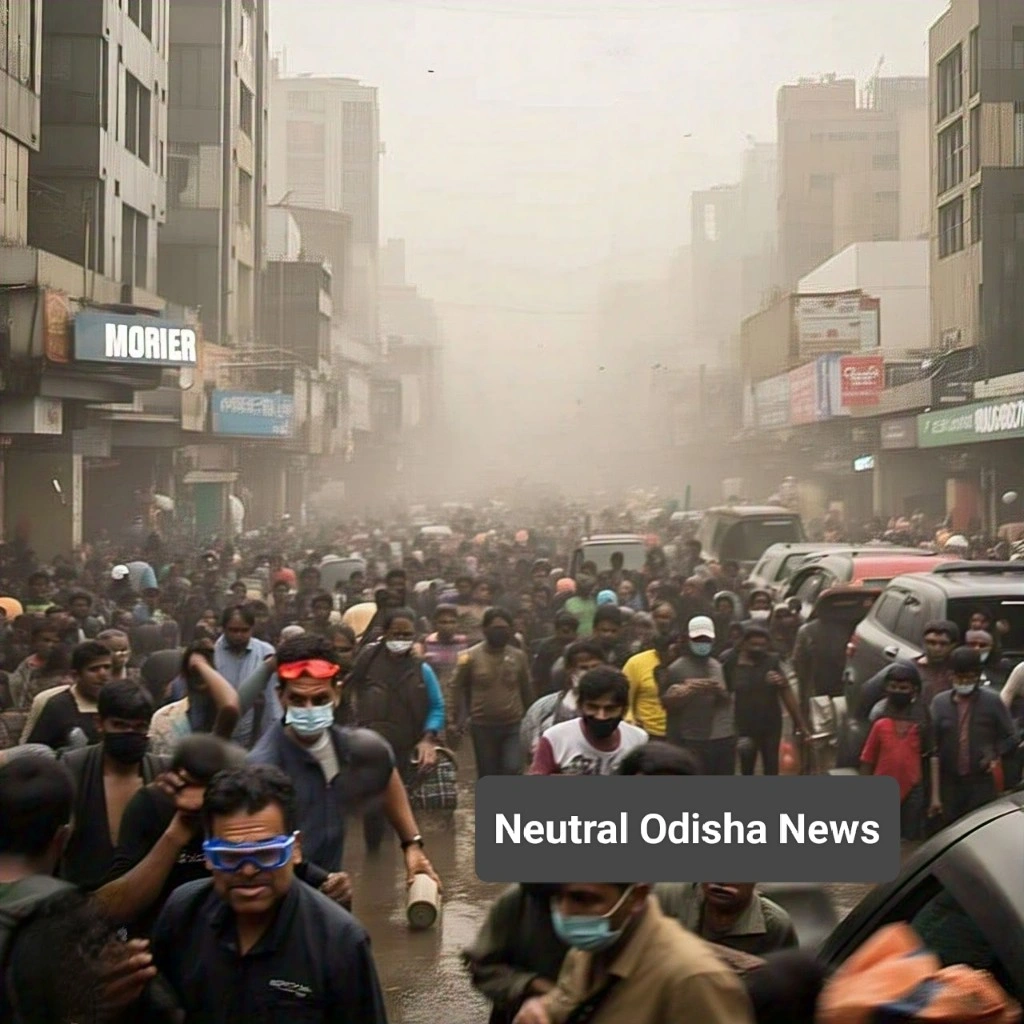Here’s a list of the major issues in Indian metros and potential solutions for each:
1. Pollution
• Issue: Indian metros face severe air, water, and soil pollution due to industrial activities, vehicular emissions, and waste mismanagement.
• Solution:
• Stricter Emission Norms: Enforce BS-VI emission standards and promote electric vehicles (EVs).
• Green Cover: Increase urban green spaces and implement green walls or rooftop gardens to absorb pollutants.
• Waste Management: Implement robust waste segregation and recycling programs.
• Public Awareness: Increase campaigns on pollution’s health impacts and encourage citizen participation in reduction efforts.

2. Blind Infrastructure Development
• Issue: Rapid urbanization without adequate planning leads to unorganized and unsustainable infrastructure growth.
• Solution:
• Master Planning: Ensure that development aligns with long-term urban plans that consider environmental sustainability.
• Environmental Impact Assessments (EIAs): Mandatory rigorous EIAs before approving large projects.
• Smart City Initiatives: Leverage technology for efficient urban planning, monitoring, and sustainable growth.
3. Lack of Public Infrastructure for Commute
• Issue: Inadequate public transportation leads to traffic congestion, pollution, and increased fuel consumption.
• Solution:
• Integrated Public Transport: Expand metro networks, bus rapid transit systems (BRTS), and connect them seamlessly.
• Non-motorized Transport: Develop pedestrian pathways and cycling lanes.
• Mobility as a Service (MaaS): Offer integrated platforms where citizens can access all public transport services through a single app.
4. Higher Real Estate Prices
• Issue: The cost of housing in Indian metros is prohibitive, leading to unaffordable living conditions.
• Solution:
• Affordable Housing Schemes: Encourage public-private partnerships to develop affordable housing options.
• Tax Incentives: Provide tax breaks for developers who build low-income housing.
• Urban Expansion: Develop satellite towns to reduce pressure on city centers and distribute population density.
5. Poor Sanitation
• Issue: Lack of clean sanitation facilities leads to health hazards, particularly in slum areas.
• Solution:
• Public Sanitation Infrastructure: Build more public toilets, especially in slums, and maintain them regularly.
• Sanitation Campaigns: Continue and expand initiatives like Swachh Bharat Mission to improve cleanliness.
• Water Treatment Plants: Install or upgrade sewage treatment plants to prevent contamination of water sources.
6. Corruption by Netas, Babus, and Government Employees
• Issue: Corruption hampers the execution of public projects and erodes trust in institutions.
• Solution:
• Transparency: Mandate online tracking of public projects with real-time data available for citizen oversight.
• Whistleblower Protection: Strengthen laws to protect whistleblowers exposing corruption.
• e-Governance: Minimize human intervention through digitization of government services to reduce bribery and delay.
7. Water Level Going Down
• Issue: Over-extraction of groundwater and poor water management are causing severe water shortages.
• Solution:
• Rainwater Harvesting: Mandate rainwater harvesting systems in new constructions.
• Water Recycling: Promote greywater recycling for non-potable purposes like irrigation and sanitation.
• Desalination Plants: Set up desalination plants in coastal cities like Chennai to meet freshwater needs.
8. Flash Floods
• Issue: Unplanned urbanization and inadequate drainage systems result in flash floods during monsoons.
• Solution:
• Urban Flood Management: Build robust drainage systems and stormwater retention structures.
• Wetland Conservation: Restore natural wetlands that act as sponges during heavy rains.
• Zoning Laws: Enforce strict zoning regulations to prevent construction on floodplains.
9. Increasing Crime Rate
• Issue: Rising crime, including theft, assault, and organized crime, is a major concern.
• Solution:
• Community Policing: Strengthen relationships between police and communities to improve crime reporting.
• CCTV and Surveillance: Increase the number of CCTV cameras in public areas.
• Police Reform: Invest in better training and resources for law enforcement agencies to improve response times.
10. Drug Abuse Increase
• Issue: Increasing drug abuse, especially among youth, in major cities.
• Solution:
• Awareness Campaigns: Launch nationwide anti-drug abuse campaigns targeting schools and colleges.
• Rehabilitation Centers: Increase the number of government-funded rehab facilities and integrate mental health care.
• Law Enforcement: Strengthen laws against drug trafficking and improve narcotics control.
11. Human Trafficking and Organ Trafficking
• Issue: Trafficking for labor, sex, and organ harvesting is rampant in some parts of Indian metros.
• Solution:
• Vigilant Law Enforcement: Improve cross-border and internal policing to prevent trafficking.
• Victim Rehabilitation: Strengthen support systems for rescued victims, including shelter and job training.
• Public Awareness: Educate communities on identifying and reporting trafficking.
12. No Rule Followers on Roads
• Issue: Traffic violations and chaotic road behavior lead to accidents and inefficiencies.
• Solution:
• Strict Traffic Laws: Enforce stricter penalties for traffic violations.
• Road Safety Campaigns: Promote road safety through public awareness campaigns.
• Smart Traffic Systems: Implement AI-driven traffic management systems to reduce congestion and detect violators.
13. Exorbitant Hospital Fees
• Issue: High healthcare costs in private hospitals make medical care unaffordable for many.
• Solution:
• Regulation of Private Hospitals: Enforce price caps on essential medical services.
• Universal Health Insurance: Expand government-backed insurance schemes to cover more people.
• Public Healthcare Investment: Increase funding for government hospitals to improve service quality.
14. High School Fees
• Issue: Rising private school fees limit access to quality education.
• Solution:
• Fee Regulation: Implement stricter fee regulation for private schools.
• Public Education System: Invest more in government schools to improve infrastructure and teaching quality.
• Scholarship Programs: Increase the availability of scholarships for underprivileged students.
15. No Work-Life Balance
• Issue: Long working hours and high stress levels in metros contribute to burnout and poor mental health.
• Solution:
• Flexible Work Policies: Encourage companies to adopt flexible work hours and remote work options.
• Employee Well-being Programs: Promote workplace initiatives for mental health support, exercise, and stress management.
• Work Culture Reform: Shift focus from long hours to productivity and efficiency at work.
Addressing these issues will require coordinated efforts between government bodies, private entities, and citizens, and metros will need to adopt sustainable urban policies to improve the quality of life.
Here are metro-wise solutions for some of the major Indian cities based on their specific challenges:
1. Delhi
• Pollution:
• Expand public transport networks, particularly metro services, to reduce reliance on personal vehicles.
• Promote EV adoption by increasing charging infrastructure.
• Implement stricter regulations for industrial emissions and construction activities.
• Water Shortage:
• Mandate rainwater harvesting in all buildings and promote the Yamuna river cleaning project.
• Invest in wastewater recycling plants to increase water availability.
• Traffic Violations:
• Implement automated traffic violation detection systems (e.g., red light cameras).
• Encourage carpooling and promote the use of bicycles by creating dedicated lanes.
• Affordable Housing:
• Create more affordable housing in satellite cities like Gurugram, Noida, and Faridabad.
• Incentivize developers to build affordable housing under the Pradhan Mantri Awas Yojana (PMAY).
2. Mumbai
• Flooding:
• Upgrade and maintain the city’s drainage system, particularly in flood-prone areas like Lower Parel, Andheri, and Kurla.
• Protect and restore mangroves and natural wetlands to act as buffers against flooding.
• Real Estate Prices:
• Expand development towards Navi Mumbai and Thane to reduce pressure on central areas.
• Improve public transport (especially suburban rail) connectivity to outer suburbs, making commuting easier.
• Drug Abuse:
• Strengthen law enforcement in areas with high drug trafficking and consumption (e.g., Dharavi).
• Increase rehabilitation facilities and introduce drug awareness programs in schools and colleges.
• Traffic:
• Expand the metro network and encourage the use of local trains for inter-city commuting.
• Implement congestion pricing in heavily trafficked areas like Nariman Point, Bandra, and Andheri.
3. Bengaluru
• Infrastructure Development:
• Improve road infrastructure with better city planning to manage the tech industry’s growth.
• Increase the capacity of the metro network and extend it to IT hubs like Electronic City and Whitefield.

• Water Shortage:
• Implement lake rejuvenation projects to restore lost water bodies and prevent encroachment.
• Focus on decentralized wastewater management and recycling for non-drinking purposes.
• Traffic and Public Transport:
• Develop a robust public bus network, incentivize carpooling, and promote app-based shared transport services.
• Introduce pedestrian-friendly zones in central business districts like MG Road and Brigade Road.
• Work-life Balance:
• Encourage the IT industry to implement flexible working hours, remote work policies, and well-being initiatives.
4. Chennai
• Water Crisis:
• Invest in large-scale desalination plants along the coast to supplement water needs.
• Encourage rooftop rainwater harvesting systems in residential and commercial buildings.
• Flooding:
• Develop better stormwater drainage systems in areas like Velachery and T. Nagar.
• Strictly enforce zoning regulations to prevent construction on natural water channels.
• Public Transport:
• Expand metro rail services and improve last-mile connectivity to IT hubs like OMR and SIPCOT.
• Promote cycling by building dedicated lanes and increasing bicycle-sharing programs.
5. Kolkata
• Sanitation:
• Improve garbage collection systems, especially in congested areas like North Kolkata.
• Upgrade public sanitation facilities to improve hygiene and reduce waste dumping into the Hooghly river.

• Public Infrastructure:
• Modernize tram services, improve the suburban rail system, and expand metro services.
• Develop smart traffic management systems to alleviate congestion in busy areas like Park Street and Howrah.
• Pollution:
• Shift industries to the outskirts and regulate emissions from local factories.
• Increase greenery and promote community-driven waste segregation and recycling programs.
6. Hyderabad
• Real Estate Prices:
• Encourage development in the northern parts of the city, such as Kompally and Medchal, to distribute population pressure from central areas like Banjara Hills and Gachibowli.
• Introduce rental housing projects that cater to middle and low-income groups.
• Public Transport:
• Expand the metro network to key tech zones like Madhapur and HITEC City, and improve bus services in Old Hyderabad.
• Implement smart parking systems and promote ride-sharing to reduce congestion.
• Water Scarcity:
• Develop a comprehensive water management system by restoring lakes and increasing rainwater harvesting.
• Introduce efficient water pricing mechanisms to promote water conservation.

7. Pune
• Infrastructure Development:
• Focus on developing satellite towns like Pimpri-Chinchwad and increase connectivity with metro lines and buses.
• Address issues of road congestion by building flyovers and widening roads in areas like Hinjewadi and Kothrud.
• Work-life Balance:
• Promote flexible work policies in the IT and automobile sectors, which are the largest employers in the city.
• Pollution:
• Increase the city’s green cover by preserving hills like Vetal and Baner Hills and converting open spaces into urban forests.
• Improve waste management, particularly in slum areas, and reduce landfill sites by encouraging waste-to-energy initiatives.
8. Ahmedabad
• Public Transport:
• Extend the Bus Rapid Transit System (BRTS) to cover more of the city and improve service frequency.
• Promote cycling and pedestrian-friendly pathways, particularly in the old city area.
• Water Management:
• Revive the Sabarmati riverfront and improve rainwater harvesting practices.
• Implement wastewater recycling in industries to reduce groundwater usage.
• Sanitation:
• Strengthen the Swachh Bharat Mission by focusing on better solid waste management in densely populated areas like Maninagar and Ellisbridge.
9. Gurugram (Part of NCR)
• Real Estate:
• Regulate real estate prices by focusing on planned development in new sectors and improving public transport to areas like Sohna Road and Golf Course Extension Road.
• Public Infrastructure:
• Develop a robust metro and bus network to connect Gurugram better with Delhi and NCR towns.
• Implement flood management infrastructure to prevent waterlogging during monsoons.
• Work-life Balance:
• Encourage corporate firms to offer work-from-home policies and implement stress management programs for employees.
Each metro requires a combination of policy enforcement, technological solutions, and community involvement to tackle these urban issues effectively.

The major differences between Indian metro cities and Western cities when it comes to urban development, infrastructure, and quality of life stem from various factors, including historical urban planning, governance, public policies, and societal behaviors. Here’s a breakdown of how Western cities perform better on some of the parameters where Indian cities face challenges:
1. Urban Planning & Infrastructure
• Indian Metro Cities:
• Rapid, unplanned urbanization with little foresight for future growth. Development often occurs without proper zoning, leading to congested areas, slums, and infrastructural stress.
• Infrastructure projects are either delayed or mismanaged due to bureaucratic inefficiency and corruption.
• Public infrastructure (roads, drainage, sanitation) is often inadequate to meet the growing population demand.
• Western Cities:
• Cities are generally planned with long-term urban development goals in mind. Zoning laws are strictly enforced, and infrastructure is designed to accommodate population growth.
• Public transport systems (like the metro, buses, and trams) are integrated and well-maintained. Infrastructure projects are completed on time with proper quality checks.
• Many cities adopt smart city technologies, including real-time monitoring of traffic, energy efficiency, and waste management.
Why India Struggles: Rapid urbanization with poor planning, insufficient political will, corruption, and a lack of citizen engagement make Indian cities fall short on urban development goals.
2. Public Transport
• Indian Metro Cities:
• Public transport in Indian cities is often overcrowded, inefficient, and disconnected. Many people still rely on personal vehicles, contributing to pollution and traffic congestion.
• Metro networks, though expanding, still lack adequate last-mile connectivity, making it hard for people to shift away from private transport.
• Western Cities:
• Most Western cities have robust, integrated public transportation systems (subways, buses, cycling paths, etc.) that provide reliable and easy commuting options. Public transport is clean, punctual, and widely used.
• Western cities encourage non-motorized transport (bicycling and walking) by developing pedestrian-friendly zones and cycling lanes.
Why India Struggles: Limited government investment in public transport, coupled with inefficient management, makes public systems less reliable. Additionally, urban sprawl makes developing a cohesive system more challenging.
3. Pollution & Environmental Conservation
• Indian Metro Cities:
• Indian cities suffer from severe air, water, and noise pollution due to high industrialization, vehicular emissions, poor waste management, and lack of green spaces.
• Pollution control measures are often reactive rather than preventive. Initiatives like banning single-use plastics or curbing stubble burning face implementation challenges.
• Western Cities:
• Western cities, especially in Europe and parts of North America, have stricter environmental regulations for industries, construction, and transportation.
• There is greater emphasis on clean energy, low-emission zones, green buildings, and expanding urban green spaces. Strict waste management policies, recycling programs, and pollution penalties are in place.
Why India Struggles: Overpopulation, lax enforcement of environmental regulations, and inadequate investment in clean technology prevent effective pollution control in Indian cities.
4. Governance and Transparency
• Indian Metro Cities:
• Corruption, red tape, and inefficient bureaucracies slow down urban governance and public service delivery in Indian cities.
• Citizen involvement in governance is limited, and feedback systems are weak, leading to poor accountability in urban development projects.
• Western Cities:
• Many Western cities have transparent governance systems where public projects are tracked, and data is made available to the public. Public engagement is encouraged, and accountability is higher due to stronger rule of law.
• E-governance systems make city services (utilities, taxes, permits) accessible online, reducing delays and corruption.
Why India Struggles: Indian cities often face a lack of transparency and accountability in governance, while corruption and political influence delay the proper execution of public projects.
5. Real Estate & Affordable Housing
• Indian Metro Cities:
• Real estate prices are skyrocketing, especially in cities like Mumbai and Delhi, driven by demand, limited supply, and speculative real estate practices. Affordable housing schemes are often poorly executed or inaccessible to the middle and lower-income groups.
• Western Cities:
• Western cities have better mechanisms to provide affordable housing through well-planned public housing policies, zoning regulations, and tax incentives. The real estate market is more regulated to avoid speculative bubbles.
• Public housing programs are effective, and social housing options are available for low-income families.
Why India Struggles: Lack of regulation, land speculation, and poor implementation of housing schemes leave many without access to affordable housing, exacerbating the urban slum problem.
6. Sanitation and Public Health
• Indian Metro Cities:
• Sanitation is a major issue, with inadequate public toilets, poor waste management, and open defecation still prevalent in some areas. Poor sanitation leads to widespread health issues.
• Healthcare systems, particularly in government hospitals, are overburdened, while private healthcare charges exorbitant fees.
• Western Cities:
• Public sanitation is given high priority, with clean, accessible public toilets, robust waste collection systems, and wastewater management plants.
• Western healthcare systems (in countries with universal healthcare like the UK or Canada) ensure basic health services are affordable or free at the point of use, while insurance systems in the US allow some coverage (though with challenges).
Why India Struggles: Poor investment in public sanitation and healthcare facilities combined with poor governance limits the reach and quality of essential services.
7. Water Management
• Indian Metro Cities:
• Indian metros suffer from chronic water shortages and depleting groundwater levels due to overextraction, inefficient distribution systems, and poor rainwater harvesting.
• Western Cities:
• Western cities generally manage their water resources better through stringent regulations on water use, advanced wastewater treatment, and the promotion of rainwater harvesting.
• Cities like Los Angeles and London have implemented water recycling and desalination programs to deal with water scarcity.
Why India Struggles: Overpopulation, lack of rainwater harvesting, poor infrastructure maintenance, and government mismanagement lead to severe water scarcity.
8. Crime, Drug Abuse, and Trafficking
• Indian Metro Cities:
• Rising crime, drug abuse, human trafficking, and organ trafficking are growing problems in Indian metros. Law enforcement struggles with a lack of resources and corruption.
• Western Cities:
• While crime and drug issues exist in Western cities, they are often tackled more effectively through community policing, better social welfare systems, and stricter law enforcement.
• Anti-trafficking measures and community safety programs in Western countries are well-developed, supported by both government and non-governmental organizations.
Why India Struggles: Lack of strong law enforcement infrastructure, poor social welfare systems, and the challenge of managing large populations contribute to rising crime rates and trafficking in India.
9. Traffic & Road Safety
• Indian Metro Cities:
• Chaotic traffic, lack of proper lane discipline, and rampant traffic rule violations lead to accidents and congestion in Indian cities.
• Public infrastructure like roads and traffic signals are poorly maintained, and there’s limited enforcement of traffic laws.
• Western Cities:
• Western cities enforce traffic rules strictly, with higher fines and penalties for violations. Public awareness campaigns on road safety are effective, and pedestrian and cyclist safety is prioritized.
• Roads are well maintained, and smart traffic management systems are deployed to manage congestion effectively.
Why India Struggles: Poor law enforcement, weak public awareness of road safety, and lack of proper infrastructure maintenance contribute to chaotic traffic conditions in Indian metros.
Conclusion:
Western cities have achieved better outcomes in these parameters largely due to efficient governance, stricter regulations, effective urban planning, and a strong focus on sustainability. In contrast, Indian metro cities struggle with overpopulation, corruption, poor planning, and weak enforcement of laws. To overcome these challenges, India needs to prioritize long-term urban development strategies, transparency in governance, and community engagement, along with investments in technology-driven solutions.




